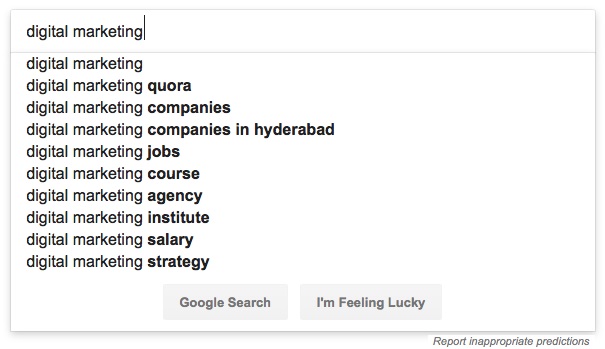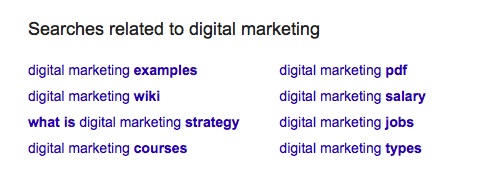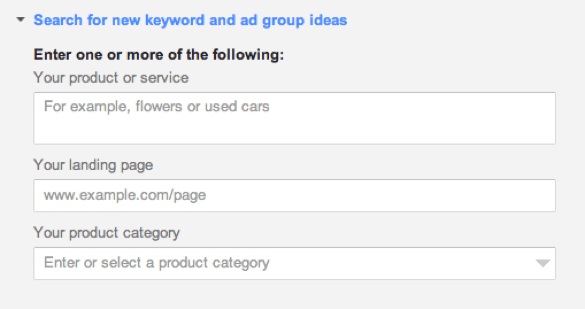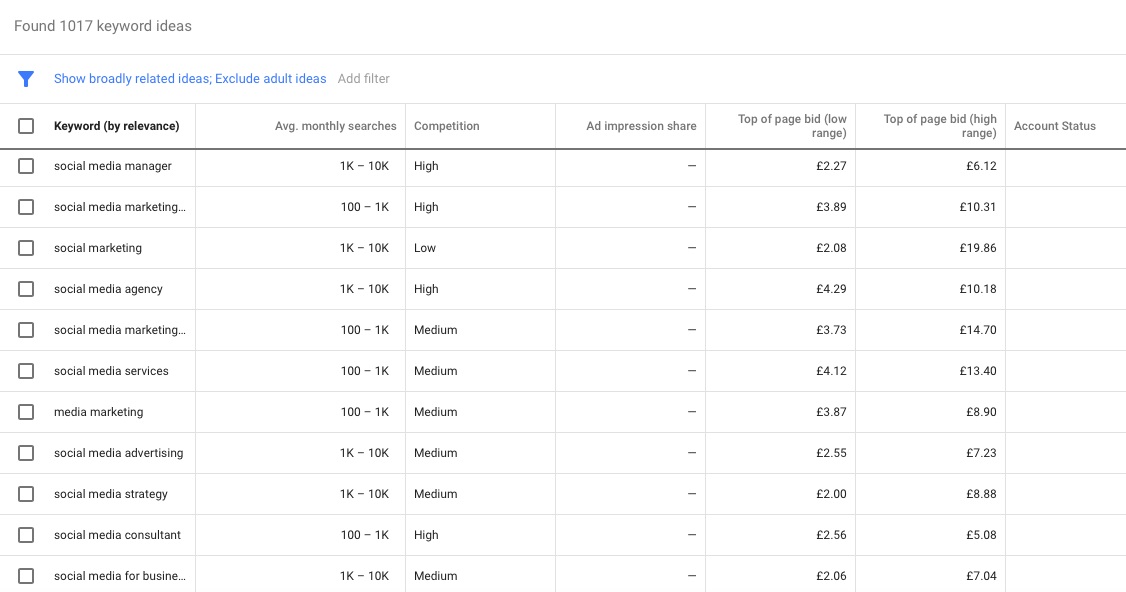Fed up of getting pretty much nowhere with your keywords? Perhaps you’re either not drawing enough traffic to your website — or you’re drawing the wrong traffic. It sucks, but there’s a solution, and it comes in the form of long-tail keywords.

Long-tail keywords can be the difference makers between you ranking higher than your competition or floundering on page 2 of Google. At Nightwatch, we absolutely love them, and in this guide, we’re going to show you exactly what they are and how you can use them to supercharge your search traffic.
What are long-tail keywords?
There are two types of keywords:
- Short-tail
- Long-tail
Short-tail keywords contain typically less than three words and are very hard to rank for. Digital marketing is a short-tail keyword, as is social media.

As you can see from the image below, we’ve checked the search volume of social media, and it’s historically very high in comparison with average keywords. This means that its competition is high too, which makes it challenging to rank new websites to rank for this search term.

Long-tail keywords, on the other hand, contain usually three words or more and are more focused. For example, digital marketing for dummies is a long-tail keyword that’s aimed at beginners who need an introduction to digital marketing. This keyword is more targeted and will draw in more of the right traffic.
Moreover, it’s more niche, which means it’s easier to oust the competition.
Digital marketing, conversely, isn’t very targeted. You might have written a blog post about digital marketing, but that keyword alone tells us little about what your article is actually about, as well as who it’s aimed at. As such, you might draw more traffic, but it’s highly likely to be the wrong type of traffic.
Let’s look at things another way: I’m on Google, and I’m looking for the answer to a question related to MacBooks. Do I type in MacBooks or do I type in What are the best MacBook deals in New York?
I — and the more significant part of your audience — go with the latter, which is a long-tail keyword, because it’s guaranteed to bring me closer to a resolution to my problem. Essentially, my query was a commercial-based term that brings me closer to a business, thus turning me into a lead. For a marketer, understanding this is really important.
Long-tail keywords, then, open you up to more of the right search traffic by allowing you to target the right users with your content. It’s literally a win/win situation. Not just this, but stats show that you’re definitely not wasting your time by building a long-tail keyword strategy. Indeed, 70% of all web searches are long-tail keywords.
“If that’s true, though,” you might be pondering, “won’t it still be difficult to outsmart the competition?”
To outsmart the competition and gain traction with long-tail keywords, you just need to be better at optimizing your content than your rivals, which we will be covering in part 3 of this article. For now, let’s take a look at…
How to find long-tail keywords
There are lots of ways to find long-tail keywords. One of the simplest methods is to use Google autocomplete.
For example, let’s say that I type digital marketing into Google. As you can see from the image below, I’m met with a few autosuggests.

Digital marketing strategy, in particular, catches my eye as it’s related to a piece of content I’ve already written. It’s more specific than digital marketing and it’s aimed at a more targeted audience.
If you want to cover the autosuggests across all the major search engines, you can use a tool called Soolve to help you do this. Their autosuggests cover Google, Yahoo, and Bing, as well as YouTube and even Amazon. For eCommerce store owners, in particular, it’s well worth exploring.
However, I’ve decided that autosuggest still isn’t enough. I scroll down to the bottom of the first page of search results on Google, where I come to a section known as “Related Searches.”
Here I’m met with even more specific long-tail keyword suggestions, as per the image below.

To find out if more people are interested in digital marketing courses or the role of digital marketing, I can use a tool like Google Trends to compare the data. Alternatively, I could open up Google Keyword Planner.
Google Keyword Planner is a free resource that’s well worth diving into. All you need is a Google AdWords account, and then you can start scouting for new long-tail keywords.
Whenever you’re looking for new keywords, include a few terms that you’ll be basing your research on. Make sure to eliminate any terms you absolutely don’t want to use in a keyword. Doing so will ensure that Google doesn’t suggest irrelevant keywords.

Google will then suggest lots of fresh keyword ideas. Of course, they won’t all be usable but this is a great way to find new long-tail keywords, and you can use the “Get search volume and forecasts” feature to learn more about the popularity of a keyword.
Another great way of finding long-tail keywords is to use the popular Q&A platform, Quora. Quora is rich with the questions that your customers are asking, and questions themselves are long-tail keywords.
Using your Google Keyword Planner to generate new keyword ideas, you may have noticed that most of the suggestions aren’t questions. Here are what my suggested keywords related to social media marketing look like:

Not many questions among them, huh?
However, what’s important to understand is the user intent behind the keyword.
There are four types of user intent:
- Informational (“how to …”)
- Navigational (searching for a specific website)
- Transactional (the user is ready to buy)
- Commercial (the user is researching before buying- for example, they’re looking to compare products)
If you can understand user intent, you can find long-tail keywords that target the right audience so that your search traffic and your conversions improve.
Taking a long-tail keyword that Google Keyword Planner suggested to me, I type it into Quora to see what comes up. As it turns out, people are asking a lot of questions based around this keyword, and I now have even more ideas for highly targeted long-tail keywords that will bring me more of the right search traffic.

SEO success will only come if you can provide content that your targeted audience finds useful and unique. Moreover, it has to be relevant. Using Quora, you can find long-tail keywords that are better targeted, and which can you can start to build stronger content around.
Then, you can use a tool like Answer the Public to find more question-based long-tail keywords. All you need to do is type a search query into the input field, before clicking “Get Questions.” The tool will then bring up a whole list of related questions, all of which can make for a great long-tail keyword. These are questions that your audience is asking, and which you can then build content around.

Another tool worth using is Ubersuggest. This is a keyword tool acquired by SEO guru Neil Patel — so you know it has to be good. It pulls in data from both Google Suggest and Google Keyword Planner but has a simpler interface than the latter. It also pulls in data from AdWords, which, although it isn’t essential, is still good to have.
When it comes to long-tail keywords, Ubersuggest makes the process of finding them that bit faster and easier. In so doing, you’re met with a bunch of long-tail keyword suggestions that you can then integrate into your content. Ubersuggest also filters keywords so that you’re able to find ones that are more usable.

How to use long-tail keywords to expand your search traffic
Long-tail keywords convert 2.5x better than short-tail keywords. But how can you use them to your advantage?
Shift your focus to keyword themes
Of course, you want to integrate long-tail keywords into your content. But you also need to think in terms of keyword themes as this is what opens you up to more traffic.
For example, let’s say that I want to create content based around the head keyword digital marketing. As per what we’ve discussed so far, digital marketing is pretty all-encompassing, and that term alone won’t drive me a lot of traffic.
Having done my research as outlined above, I figure that my best bet is to go with the digital marketing strategy as my main long-tail keyword. To this end, I think of a number of possible digital marketing strategies a user would find useful, and then I focus my content on these themes.
By doing this, I’ll likely come up with a number of different strategies. One strategy might be about content marketing, while another might be about social media. All of these strategies will require a different long-tail keyword relevant to their situation. As such, I can target different ones that target different users.
As a result, I’m not merely targeting digital marketing strategy. I’m targeting other keywords centered around social media marketing and content marketing, too. I’m expanding my traffic by expanding my content and my long-tail keyword strategy and bringing in different users who are employing different keywords.
The key takeaway here is to always be open-minded when you think about what long-tail keywords people are searching for. If you stay too narrow and just go with digital marketing strategy you’re going to miss out on a lot of traffic. You can create one piece of content and attempt to rank for a variety of long-tail keywords.
Make your keywords fit naturally into your content
If your long-tail keyword is “how to improve your conversions”, it makes no sense to stuff your page with it, as it would look awkward and unnatural. Moreover, you’d probably be guilty of keyword stuffing.
The key is to optimize your page so that your long-tail keywords are effective and fit naturally. Moreover, they need to act as a signal to both Google and your audience that your content is the right match for a particular query.
As such, it’s good practice to add your main long-tail keyword to your headline, your intro, one subheading, and your conclusion. Doing so will inform Google what your content is all about, and it will also act as a signal to your target audience. Better still, it will look completely natural.
As well as the URL and title, the headline is especially important. While your user is looking for a headline that is useful, specific and unique, and which is clearly going to solve their problem, Google ranks a headline according to relevancy.
Here is an example of an optimized headline that satisfies both the audience and Google:
“What is keyword cannibalization?”
To reinforce the fact that you’ve got relevant content the user will find valuable, use your long-tail keyword in the intro followed by an explanation of what this piece of content is about. Google is on the lookout for content that improves the user experience, so you need to make sure that your long-tail keywords are absolutely relevant and that they fit with the content. If your long-tail keywords are deceptive and don’t quite match up with the content, your bounce rate will go up and your ranking will drop.
Make sure to add your long-tail keywords to your title tags, your URLs, and meta descriptions, too, for best on-page optimization. It’s also a good idea to add your long-tail keyword to your images.
Always keep your audience in mind
When implementing long-tail keywords, always pay attention to your audience. While some terms might have awesome ranking potential, not all terms will be relevant to your audience and your content.
For example, let’s say that you have a digital marketing company aimed at enterprise companies. As you do your keyword research, you discover that queries such as digital marketing for startups have good ranking potential.
However, they’re not relevant to the image you’re creating, and they definitely won’t be helpful to your audience.
To expand your search traffic so that you draw more quality traffic to your pages, make sure that your keywords remain consistent with your branding and audience. If they don’t, you will ultimately lose out.
Final thoughts
To stay one step ahead of your rivals when it comes to ranking for long-tail keywords, you have to get good at identifying the right keywords, and you have to get good at optimizing your content with them.
Using Google itself is a great way to find the keywords your audience is using, and it also helps you to discover more topic ideas. But you should always look to combine Google with a keyword research tool, as this way you can learn more about the popularity of a search term and whether it’s really worth your time.
Understanding your audience and the content they want to see is key too, which is why using resources like Quora, Ubersuggest, and Answer the Public is a smart move.
Once you’ve got your keywords, use them to develop keyword themes. In so doing, you’ll find that you’re able to add more relevant keywords to a piece of content, which will help you to draw more traffic.
All the while, you need to fit your keywords naturally into your content and optimize your pages by adding keywords to your tags and descriptions.
Yet don’t lose sight of your audience. If your long-tail keywords aren’t consistent with your branding and your overall message, you will end up driving the wrong type of traffic to your website.
To have a solid and growing SEO strategy, you should not only track the online performance of your site but also always look out for long-tail keyword opportunities and expand your site into new sub-niches. While Nightwatch helps you to discover new keywords and ranking opportunities automatically, you should invest some extra effort into this and try out the strategies and tips we shared.
Do you have any tips of your own? Let us know in the comments!
